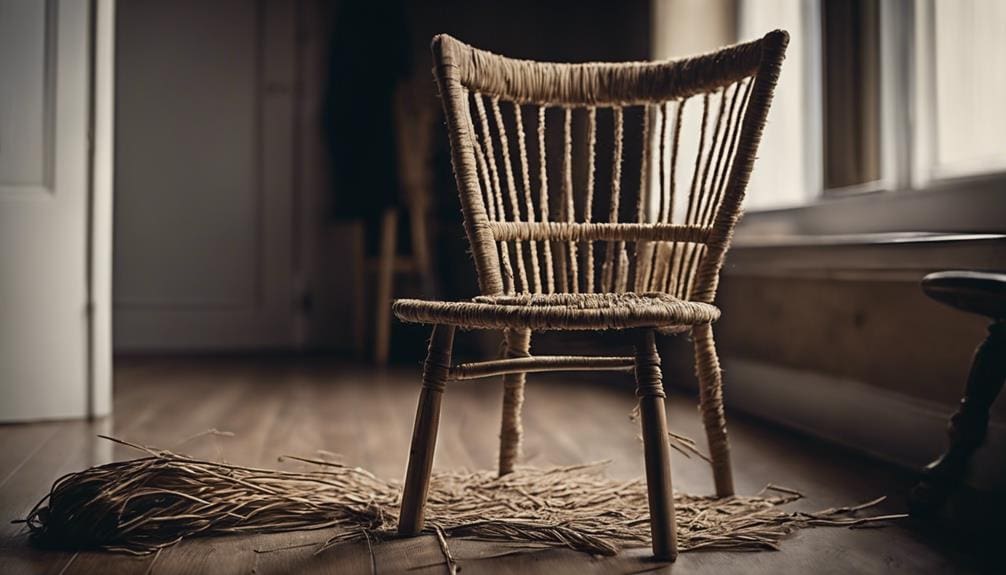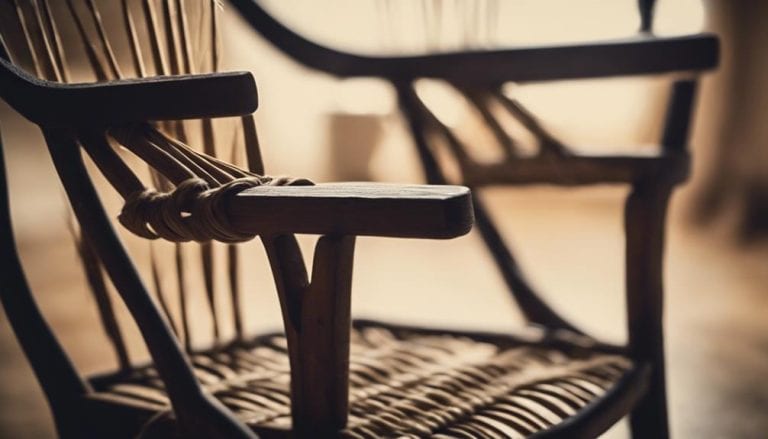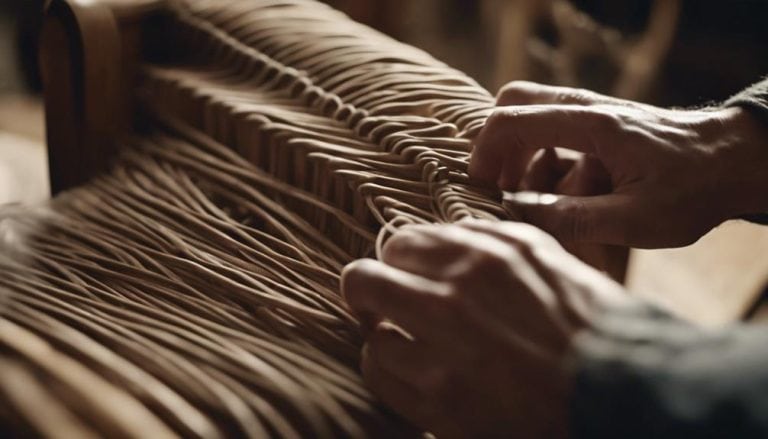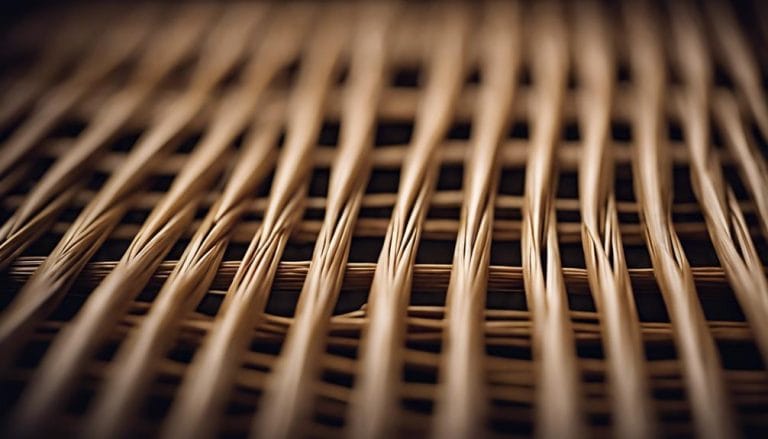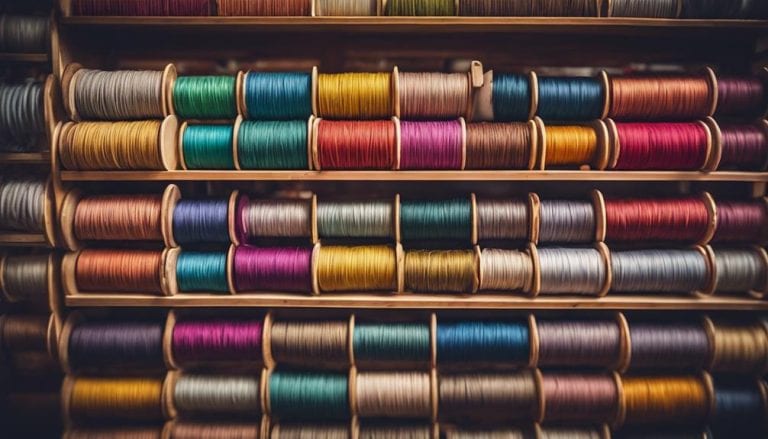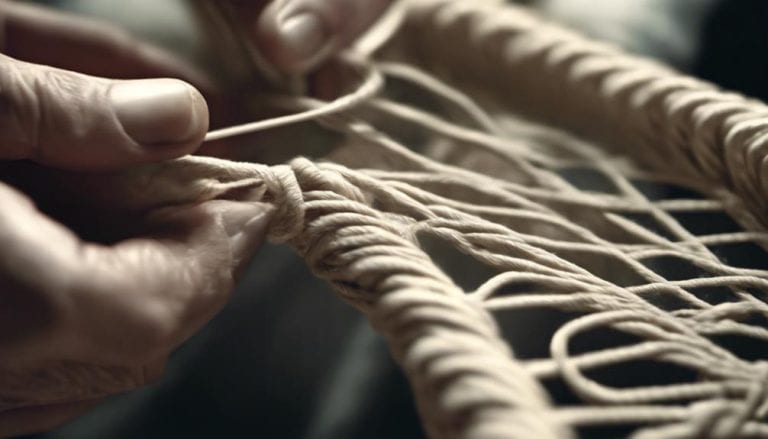Danish Cord and Rush Reed Maintenance
So, you've decided to invest in some exquisite Danish cord or rush reed furniture. Let me tell you, the maintenance involved is not as straightforward as you might think.
From basic cleaning techniques to more intricate repair processes, ensuring the longevity of these pieces requires a delicate touch and some insider knowledge.
But fear not, as I'm here to guide you through the ins and outs of maintaining these unique and timeless pieces. Stay tuned to uncover the secrets to preserving the beauty and functionality of your Danish cord and rush reed furniture.
Key Takeaways
- Regular cleaning and gentle vacuuming maintain Danish cord and rush reed furniture.
- Repair frayed or broken cords promptly to preserve structural integrity.
- Prevent mold growth by ensuring proper ventilation and using gentle cleaning methods.
- Store furniture in a cool, dry place with furniture covers for protection during off-seasons.
Importance of Regular Cleaning
Regular cleaning of Danish cord and rush reed furniture is a crucial maintenance practice to uphold the structural integrity and aesthetic appeal of the woven pieces. When it comes to Danish Cord, ensuring that dust particles don't accumulate within the intricate weaving is paramount. Dusting the furniture regularly with a soft cloth or using a vacuum with a gentle brush attachment helps prevent dirt from settling deep into the Danish Cord fibers, maintaining its pristine condition. To further safeguard the Danish Cord, employing a mild soap solution and a soft brush for periodic cleaning can effectively eliminate any embedded dirt without causing harm to the delicate weaving.
Preserving the Danish Cord from exposure to direct sunlight is also imperative. By shielding the furniture from harsh sunlight, you prevent the fibers from fading and weakening, thereby extending the lifespan of the piece. Through these meticulous cleaning practices, the beauty and durability of Danish Cord furniture can be maintained for years, showcasing its timeless elegance and strength.
Repairing Damaged Cord or Reed
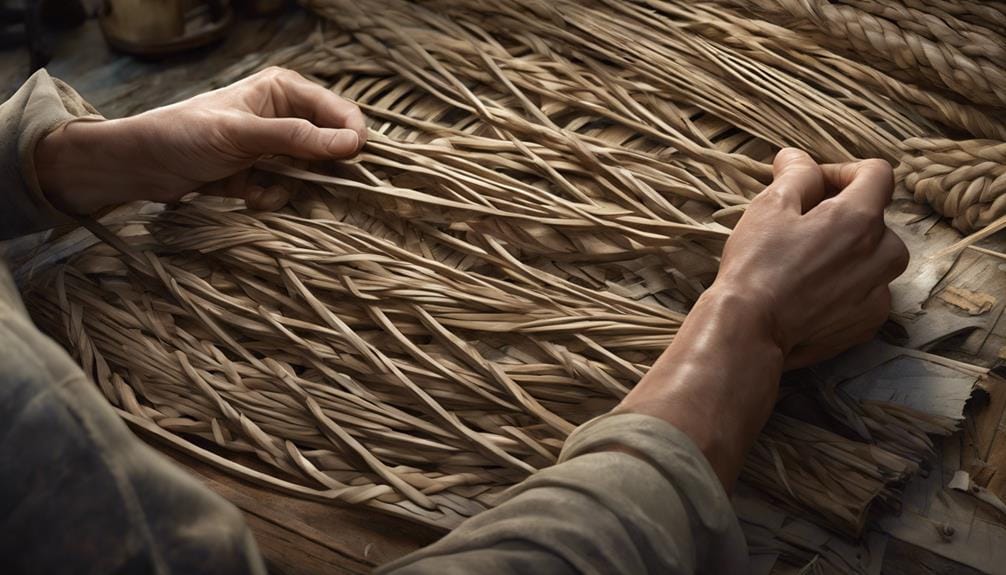
When faced with damaged Danish cord or rush reed furniture, the first step is to carefully assess the extent of the damage, looking for signs of fraying, unraveling, or breakage.
- Use scissors to trim any frayed edges of the cord or reed, ensuring a clean and even surface for repair.
- Employ pliers to secure the damaged ends and a fid to help weave in new cord or reed effectively.
- Weave the new material into the existing pattern, following the original design closely to maintain structural integrity.
- Apply a small amount of adhesive or glue at the ends of the cord or reed to prevent unraveling and secure the weaving in place for long-lasting durability.
Preventing Mold and Mildew Growth
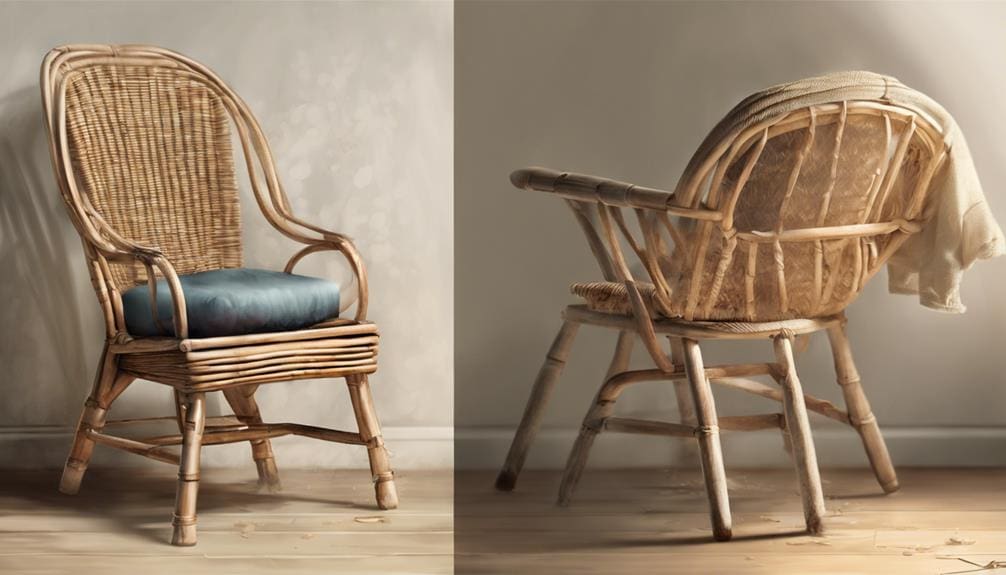
Upon encountering Danish cord or rush reed furniture, it's imperative to address the prevention of mold and mildew growth to ensure the longevity and pristine condition of the pieces. To safeguard these exquisite furniture items, proper ventilation within the room is crucial.
Regular inspection and meticulous cleaning are key; eliminating dust, dirt, and any potential moisture are essential steps in averting mold and mildew development. Maintaining low humidity levels and steering clear of damp surroundings will significantly reduce the risk of mold formation.
When cleaning, utilize a gentle soap and water solution, adhering to the manufacturer's guidelines to effectively deter mold and mildew growth. For added protection, consider applying a suitable finish or sealant to create a moisture-resistant barrier.
Storage Tips for Off-Season

To ensure the longevity and quality of Danish Cord and rush reed furniture during off-season storage, it's essential to select a cool, dry location away from direct sunlight to prevent fading and damage. Here are some powerful storage tips for maintaining your Danish Cord and rush reed pieces:
- Choose the Right Spot: Opt for a cool, dry area away from direct sunlight to prevent fading and potential damage to the material.
- Avoid Moisture: Steer clear of damp or humid storage spaces to prevent mold, mildew, and structural issues that can compromise the integrity of the furniture.
- Protect with Covers: Utilize furniture covers or breathable materials to shield Danish Cord and rush reed pieces from dust and debris accumulation during storage.
- Consider Disassembly: For larger pieces, consider disassembling them before storage. This not only eases the storing process but also prevents strain on joints and weaving, preserving the furniture for longer periods.
Tools and Supplies Needed
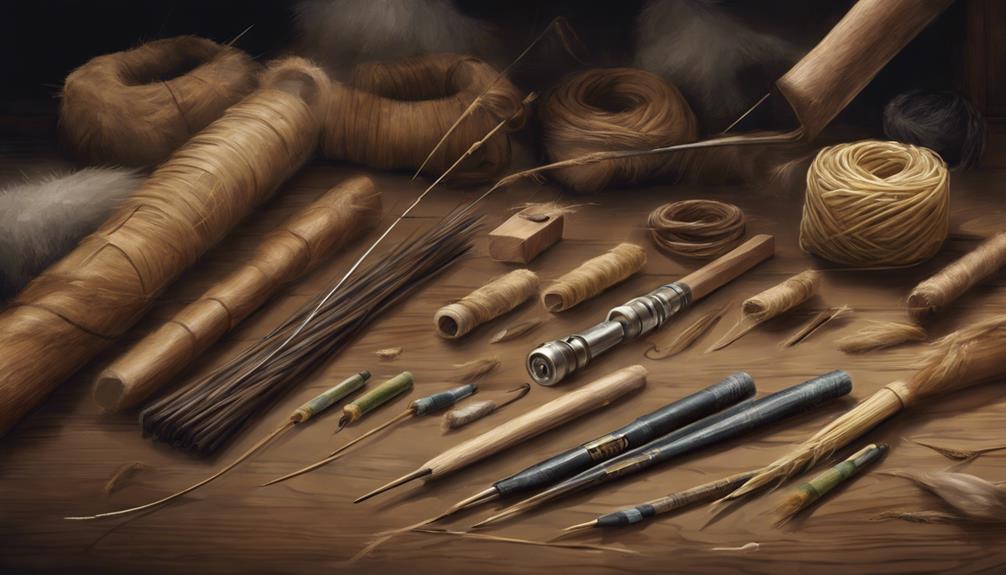
For the proper maintenance of Danish cord and rush reed furniture, having the necessary tools and supplies is essential to ensure effective repairs and reweaving. As a CHAIR MAN, the tools required for this task include a caning awl, caning chisel, caning pegs, and a caning needle. These tools are indispensable for intricate and precise work on Danish cord and rush reed seating. Additionally, essential supplies such as Danish cord, rush reed, binder cane, and reed spline are vital for executing maintenance tasks with finesse.
Utilizing tools like the caning awl and chisel with expertise is crucial for achieving accurate repairs and maintaining the integrity of Danish cord and rush reed furniture. As a CHAIR MAN, these tools empower me to handle intricate weaving patterns and intricate repairs effectively. By having the right tools and supplies readily available, I can ensure the longevity and aesthetic appeal of Danish cord and rush reed furniture, leaving no room for compromise in quality craftsmanship.
DIY Maintenance Techniques
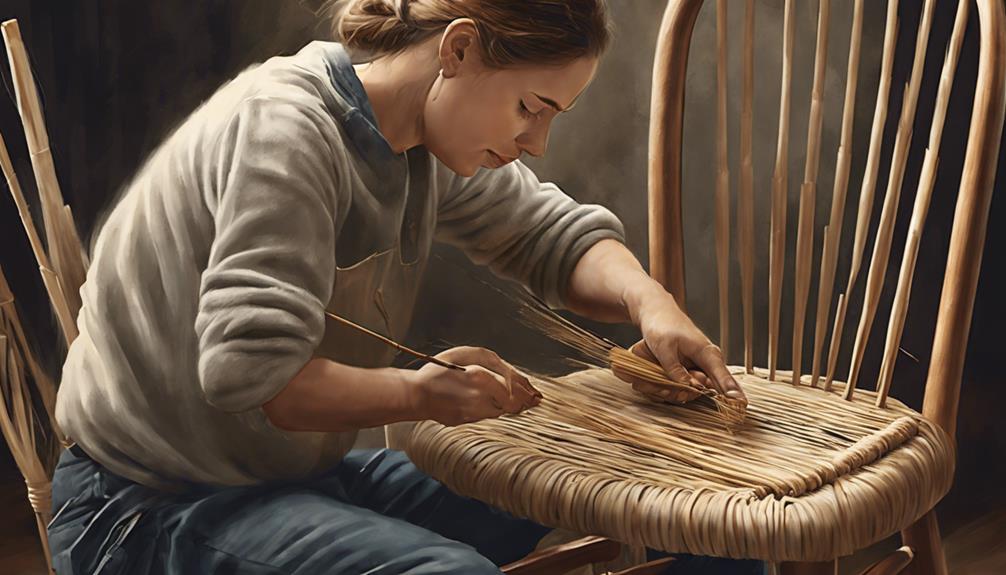
When maintaining Danish cord and rush reed furniture, incorporating DIY maintenance techniques is essential to preserve the integrity and aesthetic appeal of the intricate weaving patterns. Here are some powerful techniques to keep your furniture in top condition:
- Regular Dusting: Use a soft cloth or brush to remove dust and prevent dirt buildup on the delicate caning.
- Gentle Cleaning: Avoid harsh chemicals that can damage the natural look and texture. Instead, lightly wipe down with a damp cloth and mild soap solution.
- Sunlight Protection: Shield your furniture from direct sunlight to prevent fading and fiber damage over time.
- Inspect and Repair: Regularly check for loose or damaged cords and reeds. Promptly address any issues to maintain the structural integrity of the caning.
Professional Restoration Services
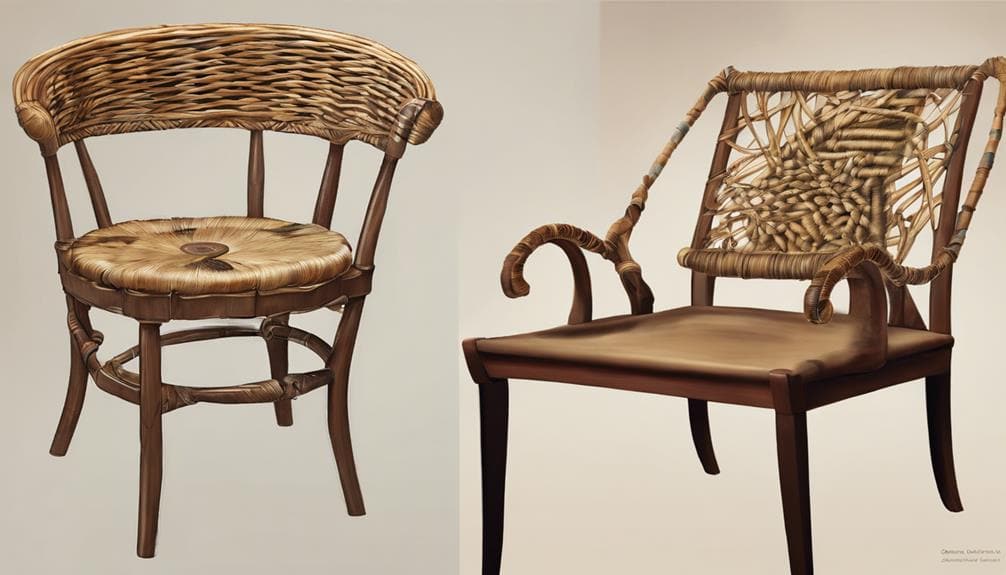
Inspecting Danish cord and rush reed furniture for intricate weaving patterns and structural integrity is a crucial aspect of professional restoration services specialized in caning and weaving techniques. As a professional restorer, my expertise lies in the meticulous art of hand caning, ensuring that each woven strand is flawlessly integrated to revive the original beauty of antique chairs with Danish cord and rush reed seats.
Utilizing specialized tools such as caning needles, rush seats booklets, and caning pegs, I meticulously repair and restore these exquisite pieces with unwavering attention to detail. My services extend to offering conventional weave cane, pre-twisted sea grass rush, and fiber rush replacements, each executed with precision and authenticity.
To guarantee the highest quality restoration, I rely on restoration resources like caning tools, instructional handbooks, and directories of seat weavers. Entrusting your Danish cord and rush reed furniture to a skilled professional ensures a restoration that honors the craftsmanship and heritage of these unique pieces.
Frequently Asked Questions
How Long Does Danish Cord Last?
Danish cord lifespan relies on factors like usage frequency and sunlight exposure. With proper care, it can endure for decades. Regular maintenance and occasional repairs are essential for preserving its integrity and appearance, potentially extending its longevity.
How Do You Clean a Danish Cord?
To maintain the pristine appearance of Danish cord, I employ meticulous cleaning techniques involving gentle soap solutions and soft brushes to ensure its longevity. Avoiding harsh chemicals is paramount to preserving its integrity.
Are Wishbone Chairs Hard to Keep Clean?
Keeping Wishbone chairs clean is a breeze. Regular dusting and spot cleaning do the trick. Gently wipe the woven paper cord seats with a damp cloth. Avoid direct sunlight to prevent fading. With care, they stay pristine.
Is Danish Cord Durable?
Absolutely, Danish cord is incredibly durable. I've seen it withstand daily use without any signs of wear. With proper maintenance, like regular cleaning and care, Danish cord furniture can last a lifetime.
Conclusion
In the intricate world of Danish cord and rush reed maintenance, remember that a well-maintained piece is like a finely woven tapestry – each cord and reed contributing to its beauty and longevity.
By following proper cleaning and repair techniques, you can ensure that your furniture stands the test of time, just like a masterpiece that only grows more valuable with age.
Embrace the art of maintenance, and watch your pieces shine like treasures in your home.

